Boxwood blight (BB) continues to spread throughout the US. The University of Illinois Plant Clinic recently announced its presence in Illinois.
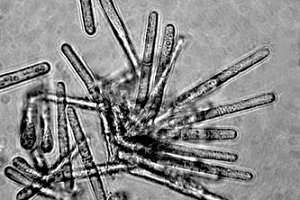
The clinic received two boxwood samples late 2016. Both were from northeast Illinois and were collected from recent landscape installations. USDA APHIS confirmed that both tested positive for boxwood blight (BB). University of Illinois Extension personnel are confident that the infected plants did not likely originate from an Illinois nursery.
First identified in the US in the fall of 2011, BB has since been detected in at least 22 states across the US, in both nursery and landscape settings. Two closely related fungi, Calonectria pseudonaviculata and C. henricotiae, cause boxwood blight on three plants: boxwood (Buxus), Pachysandra, and sweet box (Sarcococca).

The Horticultural Research Institute, a leading force in the boxwood blight fight, continues to monitor, support, and communicate BB research activities to the industry. Research activities have been heavily focused on management measures.
Sanitation and disinfection
Sanitation and disinfection are two critical components of all disease control programs. Soil in nursery beds and benches can harbor BB microsclerotia, overwintering structures in dead leaves that will be viable for years. Several commercially available sanitizers, such as ethanol and bleach, were evaluated for their efficacy against microsclerotia in lab studies. Ethanol was very effective in Dr. Nina Shishkoff’s (USDA-ARS) trials and completely killed conidia in leaf debris in studies conducted by Norm Dart, VT. Studies at CAES have shown bleach to be effective against BB spores as well.
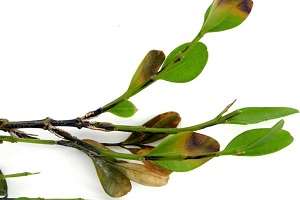
Mulching
Mulching can either help or hinder development of a plant disease, depending on the system. When it comes to boxwood blight, mulch theoretically should reduce disease development by reducing pathogen dispersal via rain splash (a primary cause of BB spread). Researchers at VT are investigating the potential mitigation of BB using various mulches. Studies are being conducted in operational nurseries and residential landscapes to best gauge impact on disease development.
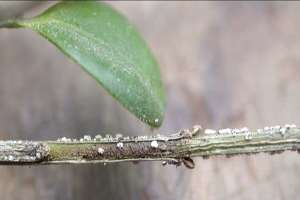
Fungicides
Few data exist on what fungicides best control BB. Dr. Jim LaMondia at CAES is comparing commercially available products and has identified some that are effective. A number of products were highlighted for their control activity, including pyraclostrobin and propiconazole. Both products have demonstrated good preventive control. Propiconazole, in particular, shows promise for early curative control. In fact, most triazole fungicides (also known as DMI’s) control BB preventively, as does preventive sprays of chlorothalonil. Always consult current product labels before applications.
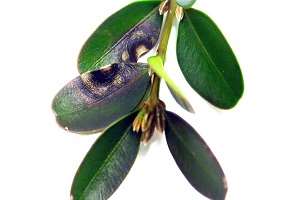
Biological control
Dr. JoAnne Crouch, USDA-ARS, and Dr. Chuan Hong, VT, are screening large numbers of microorganisms in the hopes of finding candidates for biological control of BB. Endophytes, microorganisms that live in or on a plant without causing disease, have been identified associated with boxwood leaves and roots. Often biological control agents have complex interactions with plants; so, this work can be tedious and time consuming.
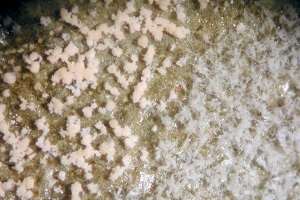
Heat therapy
Thermal inactivation, or heat therapy, has been used successfully in the past to eliminate pathogens from woody propagated plant tissue. Dr. Marc Cubeta’s lab at NCSU is conducting experiments to examine the response of C. pseudonaviculata and boxwood varieties to treatment with hot water to manage BB during propagation. After exposure to hot water at 47.5°C (117.5°F), conidia are either killed or impaired in their ability to cause infection. Preliminary results suggest that certain boxwood varieties are still able to root after exposure to these temperatures. Several varieties are being screened, and studies are ongoing to determine whether the pathogen can be eliminated from infected cuttings in this manner.
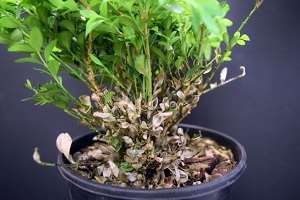
Source: psu.edu